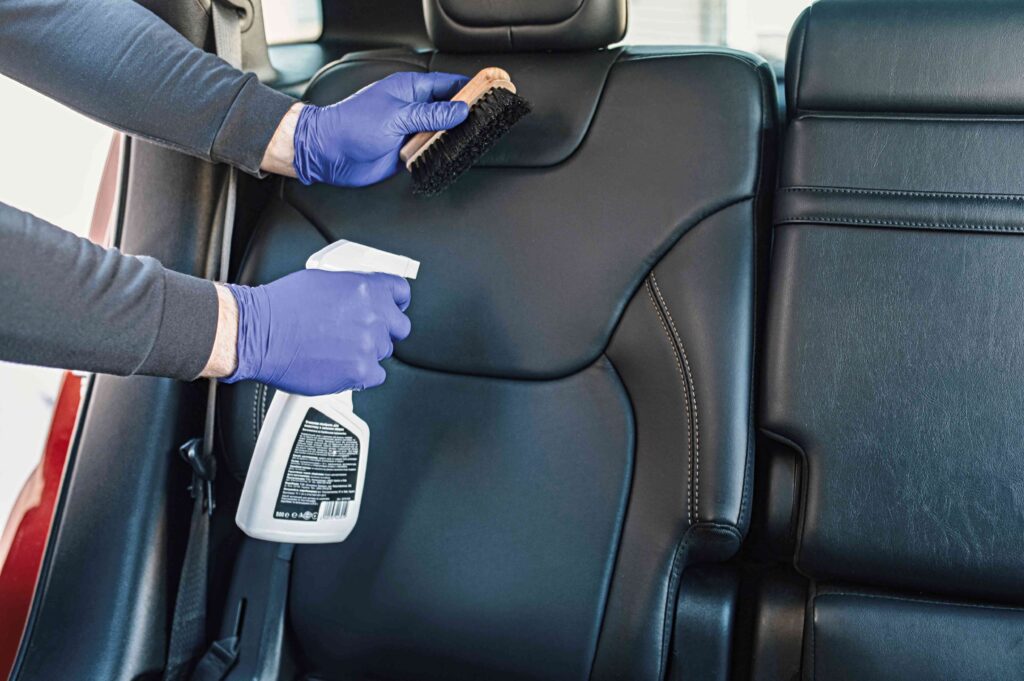
Leather upholstery adds elegance and luxury to any home or office, but keeping it clean requires proper care. Unlike fabric, leather is more delicate and can easily crack or fade if cleaned incorrectly. Whether it’s your sofa, car seats, or recliner, regular leather upholstery cleaning is essential to maintain its beauty and longevity. Here’s a detailed guide to help you clean leather upholstery safely and effectively.
Understanding Your Leather Type
Before cleaning, it’s important to know what type of leather you’re dealing with. Aniline leather is untreated and highly absorbent, making it more prone to stains. Semi-aniline leather has a light protective coating, while pigmented leather has a durable finish that resists spills. Faux leather, though not genuine, still needs gentle cleaning. Check the manufacturer’s label or test a small hidden area before applying any cleaner.
Basic Dusting and Vacuuming
Dirt and dust can scratch leather over time, so regular maintenance is key. Use a soft microfiber cloth or a vacuum with a brush attachment to remove loose debris from crevices. Avoid rough materials like paper towels, which can leave scratches. This simple step prevents dirt from grinding into the leather during deeper cleaning.
Choosing the Right Leather Cleaner
Not all cleaners are safe for leather upholstery. Harsh chemicals like bleach, ammonia, or alcohol can strip natural oils and cause drying. Instead, opt for pH-balanced leather upholstery cleaning products or make a DIY solution with mild soap (like Castile soap) and distilled water. Always dilute the soap and avoid soaking the leather—excess moisture can damage it.
Step-by-Step Cleaning Process
Start by dampening a soft cloth with your cleaning solution and gently wipe the leather in circular motions. Focus on stained or dirty areas but avoid scrubbing aggressively. For stubborn stains like ink or grease, use a specialized leather cleaner or a mix of white vinegar and water. After cleaning, wipe off excess moisture with a dry cloth and let it air dry naturally—never use a hairdryer or direct heat.
Conditioning to Restore Moisture
Cleaning removes dirt but can also strip natural oils from leather. To prevent cracking, apply a high-quality leather conditioner every 6-12 months. Use a small amount and rub it in with a soft cloth, following the grain of the leather. This step keeps the material supple and prevents premature aging.
Dealing with Stubborn Stains and Odors
For ink stains, dab with rubbing alcohol (sparingly) and wipe immediately. Oil-based stains can be lifted with cornstarch or baking soda—apply, let it sit, then brush off. If odors linger, sprinkle baking soda, let it sit for a few hours, then vacuum. Avoid using heavy perfumed sprays, as they may contain chemicals that harm leather.
Protecting Leather from Future Damage
Prevention is easier than repair. Keep leather away from direct sunlight to prevent fading and cracking. Use throws or cushions to minimize wear, and wipe spills immediately with a dry cloth. For added protection, consider a leather protector spray that creates a barrier against stains and UV rays.
When to Call Professionals
While regular leather upholstery cleaning can be done at home, deep stains or extensive damage may require professional help. At Lounge Master, we specialize in restoring and maintaining leather furniture with expert techniques and premium products. Our team ensures your leather stays pristine without risking damage from improper cleaning methods.
Final Thoughts
Leather upholstery is an investment worth protecting. By following these steps—dusting regularly, using the right cleaners, conditioning, and avoiding harsh treatments—you can keep your leather furniture looking luxurious for years. For the best care, trust Lounge Master to handle all your leather cleaning needs.
Ready to give your leather furniture the care it deserves? Contact Lounge Master today for professional leather upholstery cleaning services!

